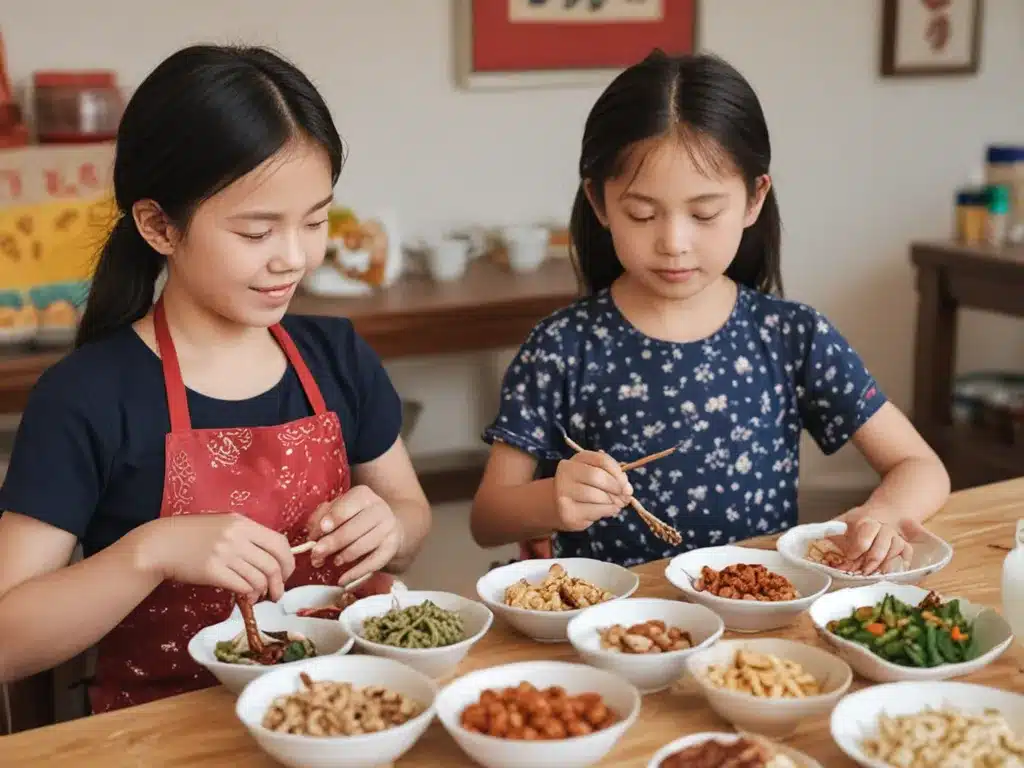
Food is an essential part of every culture. As one of the best paths to understanding another culture, introducing kids to Chinese cuisine is a wonderful way to teach them about Chinese culture. Here are some effective methods to do so:
Introducing Common Chinese Dishes
One of the first steps is to introduce kids to some common and family-friendly Chinese dishes. Chinese food runs the gamut from staples like rice and noodles to proteins like chicken, beef, and seafood. Some kid-pleasing options to start with include mapo tofu, kung pao chicken, hot pot, wonton soup, and egg foo young. Dim sum items like steamed buns and dumplings are also a big hit with kids. China has a long history and many regions, so I expose my kids to different regional cuisines from places like Sichuan, Shanghai, Hong Kong, and Beijing. Introducing a variety helps them understand how diverse Chinese food can be based on the locality.
Learning to Prepare Simple Chinese Dishes
Getting hands-on in the kitchen is a fun way for kids to learn. I often involve my kids in preparing easy Chinese dishes. We start with simple things like cooking rice, prepping ingredients for stir fries, or making steamed buns and dumplings together. The kids enjoy tasks like mixing ingredients, forming shapes, and watching the final dish come together. Through this process, they learn about basic Chinese cooking techniques and come to appreciate the effort that goes into meals. We also discuss where different ingredients originate from and their cultural significance. Being actively involved in meal prep fosters an interest in Chinese culture beyond just the enjoyable parts of eating.
Incorporating Chinese Table Manners
Table customs are an integral part of every culture. I teach my kids proper Chinese table manners when we eat our home-cooked Chinese meals together. For example, we use chopsticks instead of forks whenever possible. The kids find it fun to learn chopstick skills. We also observe etiquette like not pointing our chopsticks, keeping elbows off the table, and bringing empty dishes to the center of the table when finished. I explain rules like how one should compliment the chef when enjoying a meal. Following simple traditions helps my kids appreciate Chinese dining culture in a low-pressure way. They start to view mealtime beyond just eating to also learn social behaviors.
Celebrating Chinese Festivals and Holidays
Food plays a pivotal role in most cultural celebrations. Introducing my kids to Chinese festivals and holidays through food has been very effective. We try authentic dishes and desserts associated with celebrations like Chinese New Year, Mid-Autumn Festival, and Dragon Boat Festival. For example, we’ll cook tangyuan for Winter Solstice and enjoy mooncakes during Mid-Autumn. I explain the traditions and origins behind each festival to the kids. Even simple things like decorating our home with red decor for Chinese New Year sparks questions and conversations. Experiencing joyous occasions through meaningful dishes helps imprint cultural practices and traditions in their minds.
Branching Out to Chinese Snacks and Desserts
While most kids love savory dishes, introducing sweet treats captures their interest as well. We explore the variety of Chinese desserts and snacks. Baozi, youtiao, mantou, wagashi, and danggo are comforting snacks we make. The kids also love trying hongdoushaobao, tanghulu, zongzi, and mooncakes specially around holidays. I explain how snacks vary based on regional specialties. We also discuss why certain ingredients like lotus seeds and adzuki beans are used. Involving kids in the fun process of making sweet treats cements their understanding of different aspects within Chinese cuisine and culture.
Incorporating Chinese Elements on Play Dates
Playing is how kids best experience other cultures. I encourage doing play dates centered around Chinese cultural elements. We’ll set up scenarios involving play food, dishes, and props for pretend cooking and cafe settings. Acting out real-life cultural situations fosters familiarity. Other engaging activities include making Chinese-inspired crafts and playing Chinese games. I also organize cultural movie nights where we watch films while enjoying Chinese snacks. Making culture exploration an interactive and social experience sustains kids’ natural curiosity. Play dates in this style guide playful hands-on learning for their little friends too.
In conclusion, experiencing different aspects of another culture through the familiar lense of food is highly effective for imparting foundational knowledge to kids. Regular exposure in a positive, low-pressure manner helps children form a genuine interest and appreciation for Chinese culture beyond just the cuisine. While they may not fully grasp every detail, these experiences plant seeds that will hopefully blossom into lifelong understanding and respect between cultures as they grow.






